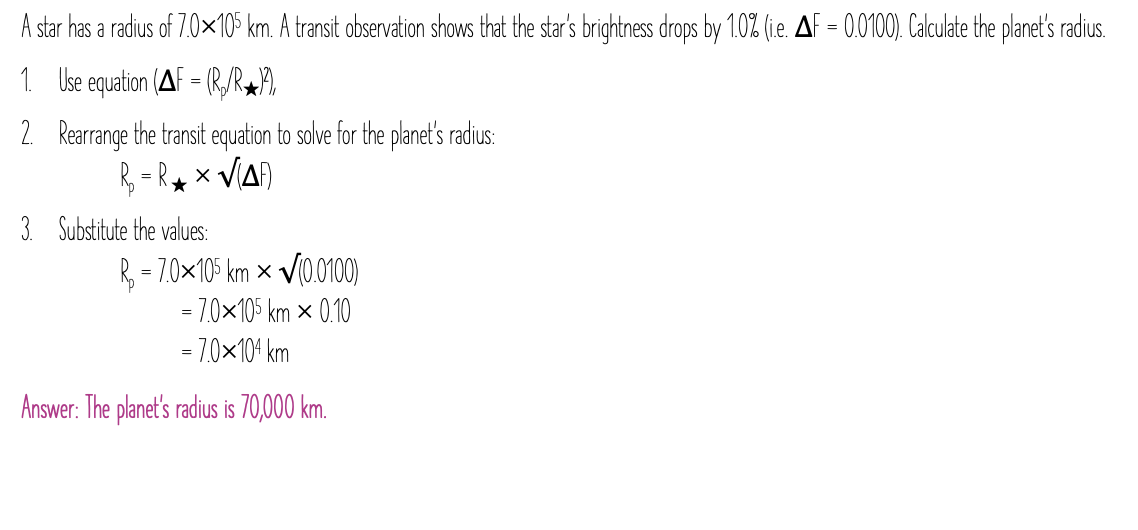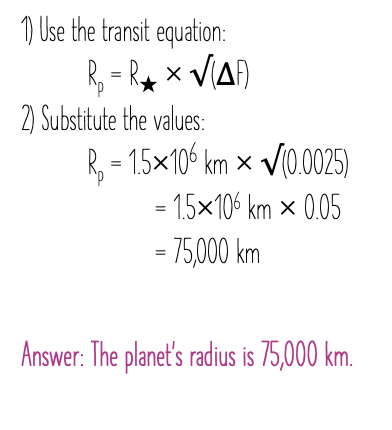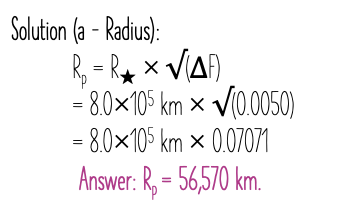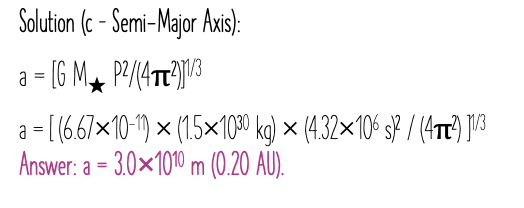Chapter 7 - The Planetary
Quiz 6
Our Solar System
planets are large, spherical isolated bodies that orbit a star
must clear debris from its own path
a planetary system is a system of a star, planets, moons, and smaller bodies
Nebular Hypothesis
a rotating cloud of interstellar gas gradually collapses and flattens to form a disk
the sun forms at the center and planets form from the disk
modern theory calculates conditions required for a cloud to collapse under the force of gravity
self-gravity is the attraction between parts of an object tha tpull outer layers toward the center
self-gravity is opposed by structural strength, gas pressure, or radiation pressure
in a stable object, inward and outward forces are balanced
Evidence
Astronomical Images
young stars are seen to be surrounded by rotating disks of gas and dusts
Motion of Planets
evidence of our own planets support the nebular hypothesis
all planets orbits the sun in the same direction and in the same flat plane
we can deduce that the planets must have formed from the same flat, rotating disk of material
Meteorites
contain hints to the solar system’s formation as well
many are mixtures of smaller rocks or pebbles, suggesting formation through a process of aggregation
Thought Experiment: Temperature of a Balloon
make the circumference at the widest part of the balloon
cold - shrink
warm - expand
when temp drops, outward pressure decreases, balloon shrink sunder self-gravity
illustration of a system maintaining hydrostatic equilibrium
ensures stars and planets are stable systems
7.2 The Solar System Began with a Disk
Solar System Beginnings
a collapsing cloud of interstellar gas formed a protostar and protoplanetary disk
protostar - a large ball of gas; not hot enough to be a star
protoplanetary disk: flat, orbiting disk of gas and dust
Growth of Particles
within the disc, small articles will collide and stick
small particles are blown into larger ones by gas motions
this leads to larger particles (~1km in size) called planetesimals
at a size of 1km, gravity takes over and pulls nearby objects into the planetesimal
through growth driven by gravity, planetesimals combine to form planets
today’s remaining planetesimals are asteroids and comets
asteroids - rock and metal
comets - ice and rock
What an astronomer sees
notice the brown clumps that are too dense to see through these are sites of star formations
notice the jets of materials being ejected by newly formed stars
Visual Summary: The Collapsing Cloud
as gravity causes the collapse of a slowly rotating clump, it rotates faster
rotation slows collapse perpendicular to but not parallel to the axis, so the clump flatters
eventually the clump collapses from the inside out, and an accretion disk and protostar form
Formation of a Flat Disk
most of the as lands on a accretion disk, which continues the rotation
the angular momentum of the interstellar cloud is conserved and ends up in the accretion disk
material in the accretion disk either becomes part of the protostar, forms planets, or is ejected back into interstellar space
Definition of Angular Momentum
angular momentum is associated with rotating objects. It depends on
rotational velocity
mass
mass distribution
Conservation of Angular Momentum
conserved quantity. It cannot change unless an external force is applied
the figure skater’s angular momentum does not change, but as she pulls in her arms, she rotates faster
p=mv
L=Iw
I=mr²
L=mr²v/r
L=mvr {Angular Momentum (Point Mass)}
Angular Momentum on a Sphere
I = 2/5mr²
L = Iw = 2/5mr²w
L = 2/5 mr²v/r
L=2/5mrv (v=2pir/p)
L=4/5(pimr/P)
Angular momentum deends on an object;s mass, size, and speed. If a giant giant gas intitially rotaes slowly, what will happen to tilts
speed up
calculate orbital angular momentum, we need to know Jupitaer’s mass, velocity and size of orbit
1.94 × 10^43 m²/s
for a uniform sphere, spin angular momentum is give by 4pimR²/5P
for the sun
1.14 × 10^42 m/s
7.3 The inner disk and outer disk formed at temperatures
Conversion of Energy
gas the fas cloud shrinks, its gravitational potential energy is converted to kinetic energy, radiative energy, and thermal energy. Energy is conserved
thermal energy is greater in the inner portion of the disk
gravitational energy is converted to heat more in inner disk than outer disk
the inner disk is closer to protostar, which heat sup the surrounding material
Disk Composition
the composition of dust grains depends on temperature
inner disk - only refractory materials can form or remain
outer disk - can also have volatile materials such as ices and organic material
Refractory - does no melt at high temperature
Volatile - can melt or evaporate at moderate temperatures
Organic - contains carbon-hydrogen bonds
Atmospheres
the primary atmosphere is the gas initially gathered from the disk
primarily hydrogen and helium (low-mass gases)
the process of gathering atmosphere is called core accretion-gas capture
Secondary atmospheres occur around some low-mass planets because he initial atmosphere is lost
the low-mass planets do not have enough gravity to keep the initial atmosphere form escaping
volcanoes emit heavy gases from the planetary interiors that the planet can hold on to for a very long time
comets bring water and other volatiles to planets, which evaporate and add to the secondary atmosphere
Quiz 7
Gas Giants
the giant planets are jupiter, saturn, uranus, and neptune
farther from the sun, planetesimals could contain volatile and organic materials
can also form ices
planetesimals grew large enough that their gravity could capture nearby gas
primarily formed of hydrogen and helium
the model of giant planet formation is called the core accretion-gas capture
mini accretion disks formed aorund these larg epanetesimals (planet cores( and began funneling material onto them
large moons formed from the mini accretion disks
gravitational energy was converted into thermal energy, heating these planets
the forming sun emits winds and jets thta the planetary nebuyla of most gas
jupiter only had 10 million years to form before the most gas was lost
The formation of our solar system: other objects
moon - a natural satellite of a planet of asteroid
they are sometimes formed in accretion disks around planets
dwarf planets: round objects that orbit the usn but have not cleared their orbits of smaller bodies
asteroids - small bodies found inside Jupiter’s orbit
comet nuclei - icy planetesimals in outer Solar system that survived planetary accretion
cataclysmic impacts
in the early solar system, impacts from remaining planetesimals were common
impacts resulted in heavily cratered surfaces (such as on the moon and mercury)
a giant impact formed our moon
impacts knocked uranus on its side, so it rotates perpendicular to its orbit planeand Venus rotates backwards
7.5 Planetary systems are common
Planetary systems are common
disks are commonly seen around young stars
this suggests that plaents regularly form around other stars
an exoplanet is a body with a mass less than 13 Jupiter masses that orbits a star other than the sun
Exoplanets
March 2025, 5,856 known exoplanets have been confirmed
there are several techniques used to find these planets:
radial velocity method
transit method
microlensing method
direct imaging
astrometry
Transit Method
a planet passing in front of a star (transiting) decreases the total brightness of the star
because of the space missions Kepler and TESS, this is the most common way to find planets
the transit method can be used to calculate the size of a planet
planets can be distinguished by:
different periods
different depths
different durations
Estimating the Radius of an exoplanet
with the transit method, astronomers can determine a planet’s radius:
fractional reduction in light = Area of Planet/area of star = piR²planet/piR²star = R²planet/R²star
the radius if a star is estimated from the star’s temperature and luminosity
Kepler-11
Kepler-11 is a system of at least six planets. The host star has a radius 𝑅star = 7.7 × 10^5 . Planet Kepler-11c causes a 0.077 percent reduction in light. Now we can solve for Kepler-11c’s radius:
0.00077 = R² Kepler-11c/(7.7 X 10^5km)²
R²Kepler-11c = 4.6 × 10^8km²
RKepler - 11c = 2.1×10^4 km = 3.3Rearth
Radial Velocity Method
gravity
motion of star can be detected by doppler shifts
some stars have periodic velocity changes: therefore, they are orbited by planets
the radial velocity method only works for giant planets around nearby stars
the method can be used to determine a planet’s orbit
Radial Velocity Method Illustration
light from a star is blueshifted as it moves toward us, causing a negative velocity shift
light from the star is redshifted as it moves away from us, causing a positive velocity shift
most negative radial velocity = star moving primarily towards observer (can als be moving up or down)
most positive radial velocity - star moving primarily away from observer
the planet is orbiting the center of mass
Planet’s motion if opposite to that star
Estimating the size of a planet’s orbit
the radial velocity method can be used to determine the size of a planet’s orbit
to see how, recall Newton’s verion of Kepler’s third law
P² = 4pi²/G A³ /M → A³ = G/4pi² M * P²
p = period of orbit
m = mass of star and planet
a = semi-major axis
g = 6.67 × 10^ -20 km³/kg s²
For planet HD70642b
P = 5.7 yr = 1.8 × 10^8 s
M = 2 × 10^ 30 kg
Now, we solve
A³ = G/4pi² X M X P²
6.67×10^ -20 km³/kg s² / 4pi² x (2×10^ 30 kg) x (1.8 × 10^8 s)²
A³ = 1.1 × 106^ 26 km³
A = 4.8 × 10^8 km = 3.2 AU
Newton’s form of Kepler’s 3rd Law
P² = 4pi²/GM(star)(A³)
Vp(velocity of planet) =2piA(planet)/P(planet)
Question
a star has a radius of 7.0 × 10^5 km. A transit observation shows that the star’s brightness drops by 1.0% (i.e LambdaF = 0.0100). Calculate the planet’s radius.
LambdaF = Rp²/Rstar²
lambdaf R(star)² = Rp²
square root(Flux)Rstar = Rp
sqaure root (0.01)(7.0 × 10^5) = 70,000 km

a star has a radius of 1.5 × 10^6 km. Durng transit, the brightness decreases by 0.25% (i.e LambdaF = 0.0025). Calculate the planet’s radius.
75,000km

a star with a mass of 2.0 × 10^ 30 is observed to have a maximum radial velocity shift of 10 m/s due to an orbiting planet. The orbital period if 100 days.
What is the estimated planet mass?
Using the period and star’s mass, what is the semi-major axis of the planet’s orbit?
estimated planet mass
Convert period to seconds
use Mp = Vstar * mstar^ 2/3 (Pp/2piG)^ 1/3
semimajor axis
use Kepler’s third law in the form
a=[GMstar P²/(4pi²)]^ 1/3
substitite the known values


a star with a mass of 1.5 × 10^ 30 and a radius of 8.0 × 10^5 km. Observations reveal a transit dip of 0.50% (lambdaF = 0.0050) and the stars maximum radial velocity is 15m/s. The orbital period is 50 days.
What is the planet’s radius?
What is the estimated planet mass?
What is the semi-major axis of the planet’s orbit?
Radius
Planet’s Mass
Semi-major axis
Other Methods
direct imaging - taking a picture of the planet directly
diffcult because the stars are much brighter than the planets
other methods are needed to follow up
microlensing - makes a star temporarily brighter through a planet’s gravity focusing its light
Astrometry - detects planets by precisely measuring the change in position of a star in the plane of the sky
Types of Exoplanets: Hot Jupiters
hot jupiters are jupiter-sized planets that orbit solar-type stars in very close orbits
they are very easy to detect
they cause a big wobble on their star
they trnsit regularly and casue and easily noticebale drop in brightness
they surpirsed astronomers becayse, according to the nebular theory, such volatile-rich planets should not be so close to the star
planetary migration occus when a planet changes irs orbit after formation


